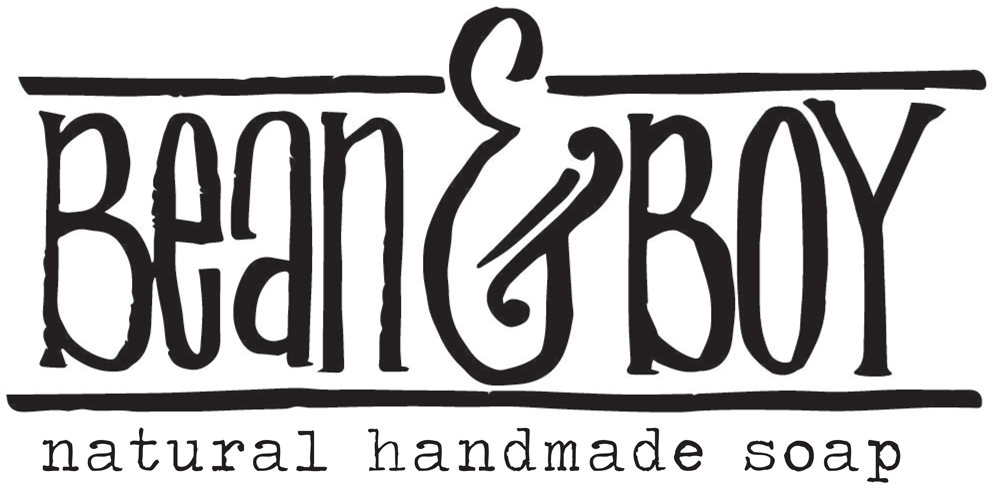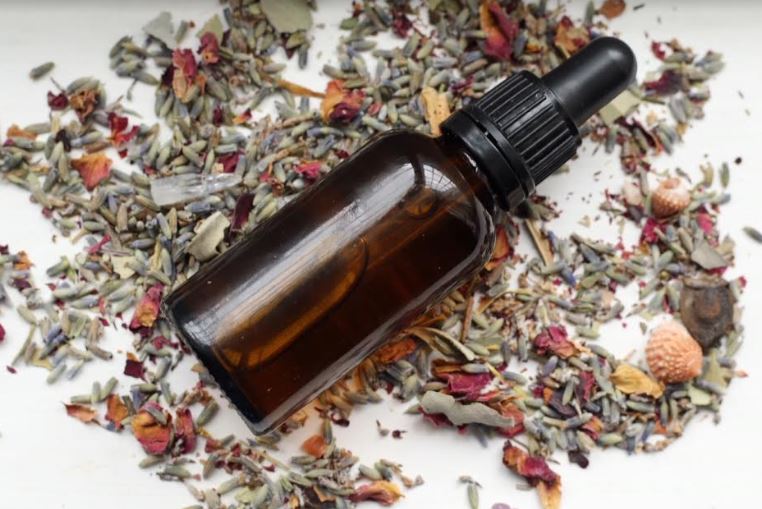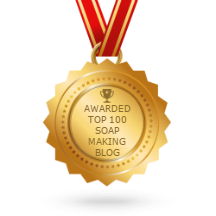You may remember Sophie from Betony & Sage after meeting her in a blog post a few moons back (see it here if you want to recap). Today, she’s sharing an amazing DIY recipe for Wild Rosehip Oil. Read on to find out more!
 The natural world is a constant inspiration to me. Mother Nature is what inspired me to start my own small business, with the goal of creating Earth kind products that help others to connect with nature. I have worked in the environmental conservation for the past 8 years and have come to realise the extent to which humans, especially through mass consumerism, are having a negative impact on our wonderful planet. It has driven me towards taking steps towards living a simpler life. One of the ways I have done this is to reconnect with the magic of plants.
The natural world is a constant inspiration to me. Mother Nature is what inspired me to start my own small business, with the goal of creating Earth kind products that help others to connect with nature. I have worked in the environmental conservation for the past 8 years and have come to realise the extent to which humans, especially through mass consumerism, are having a negative impact on our wonderful planet. It has driven me towards taking steps towards living a simpler life. One of the ways I have done this is to reconnect with the magic of plants.
For me, there is nothing more healing than time alone in nature. It is there I feel grounded, inspired and intrigued. This sense of wonder is the start of a lifelong journey, once kindled never goes out. I love the mindfulness of looking for plants, there so many different shapes, textures and colours. So many plants, from tiny meadow flowers to tall towering trees. When you start to really look for plants you’ll notice that there’s so much to see and so much to learn. Before you begin your journey into foraging, I feel it is important to get to know the wildlife around you. A mindful walk or a walking meditation is a really great place to start. Clear your mind and listen to the natural world around you; feel the trees, take in the earthy smells, feel your feet on the grass, breathe in the cool fresh air. Appreciate nature, in her full form, her intrinsically important form, before even considering utilising her fruits. This will assist you in being more in tune and aligned with her gifts.
At this wonderful time of year, the hedgerows begin to hang heavy with fruits. There are bright rosehips and haws, plump sloes and plums. The trees are beginning to change, golden hued with rich reds and ambers, our world more vibrant after the dry and parched summer. There is a rich, fruity smell hanging on the hedgerows. An abundance of fruit for our wildlife; hedgerows are great connective habitat for small mammals like dormice and birds. These fruits provide a vital food source for wild animals, for us they offer the opportunity to experiment and harvest a little plant magic. Try making hawthorn ketchup, sloe gin, elderberry syrup; there are seemingly endless possibilities but one of my most favourites is a wild rosehip facial oil. There is something magical about making your own cosmetics, especially as you can tailor the ingredients to work well with your skin type.
Here is a really simple idea for working with Mother Nature’s fruits at this time of year:
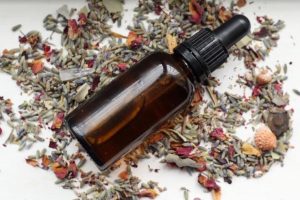 Wild rosehip oil:
Wild rosehip oil:
Forage for rosehips, you’ll only need a handful.
Jojoba seed oil, vitamin E oil, grape seed oil, rose essential oil (the total amount of oils needed is double that of rosehips, so if you have one cup of rosehips you’ll need two cups of oils).
Clean off your rosehips and remove the white fluffy insides (you don’t have to do this but the insides are an irritant so strain carefully if you decide to skip this step). Place the red fruit into a slow cooker, just cover with a mix of jojoba seed oil and grape seed oil (jojoba is richer so more suitable for drier skin). Allow to very gently warm for eight hours, not letting the oil get hotter than 100 degrees. Then strain carefully through a muslin. Once cooled add a couple of drops of rose essential oil and some natural vitamin E oil. Pour into a glass container, preferably with a pipette. Use a couple of drops every morning and night on the face and neck. Rosehips are rich in vitamin C and are an antioxidant so are great at helping the skin to appear rejuvenated and vibrant. This will keep for up to 6 months.
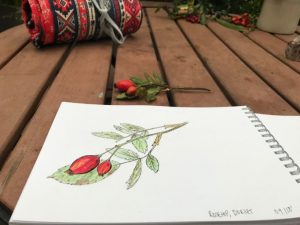
Simple Foraging Guide:
To assist you in foraging sustainably, there are a few really simple steps you can stick to.
- Ask for the landowner’s permission, they will be able to tell you really useful information, for example; if chemicals have been sprayed on the land or if there are any locally rare plants to avoid picking.
- Our wildlife is protected by law, never dig up the whole plant as it prevents it from re-establishing and is an unsustainable practice.
- Learn some basic botany to help you identify plants correctly. This will also help you to get to know which plants are common in your local area, and therefore which plants are ‘forage-able’.
- Only take enough for you and your family and never take more than you’ll use.
- Put wildlife first, it may seem as though there is an abundance of berries at the moment but ensure that whatever you remove, plenty stays put.
If you would like to learn more about wild medicine, foraging and nature’s healing potential, keep up to date on Instagram: @betonyandsage where you’ll find my organic, botanical products.
Click here to read our interview with Sophie
